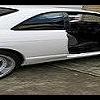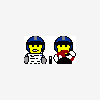Pistons For Your Rb30
Announcements
-
Similar Content
-
Latest Posts
-
I laughed so hard a snot bubble popped out my nose ! And seriously ! You can still buy a decent house in Western Sydney for 2 mill ? ?
-
Come on guys, they're just trying to sell their project car to scrape together a house deposit in the Western Suburbs of Sydney...
-
Sounds like the solenoid might be cactus, if the solenoid trigger wire was still attached (and it was just the main power to the starter itself remove). Just to provoke Neil haunting me for the rest of my life... Have you tried tapping it with a hammer while someone switches the key to start? This might work for the fuel pump too... 😛








Recommended Posts
Create an account or sign in to comment
You need to be a member in order to leave a comment
Create an account
Sign up for a new account in our community. It's easy!
Register a new accountSign in
Already have an account? Sign in here.
Sign In Now